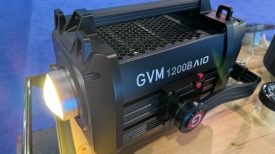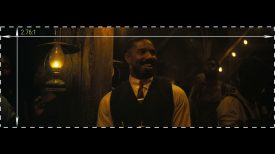By technical editor Matt Allard:
With all the recent announcements of new cameras from Sony and Canon a lot of people seem to be forgetting the importance of good lenses. Using a good camera without good lenses is like watching a standard definition feed on your HD TV or listening to music on a $10,000 amplifier hooked up to a $100 pair of speakers. Good glass can last you a lifetime; a new camera may only last two or three years in today’s climate.
There have been a couple of big lens announcements in the last few days.
Canon have announced the CN-E15.5-47mm T2.8 L wide-angle cinema zoom lens and the CN-E30-105mm T2.8 L telephoto cinema zoom lens. Each lens will be available in both EF and PL mount configurations (the EF-mount version is designated by the letter “S” at the end of the model name; the PL-mount version by the letters “SP”). Both lenses weigh in at 2.2kg.
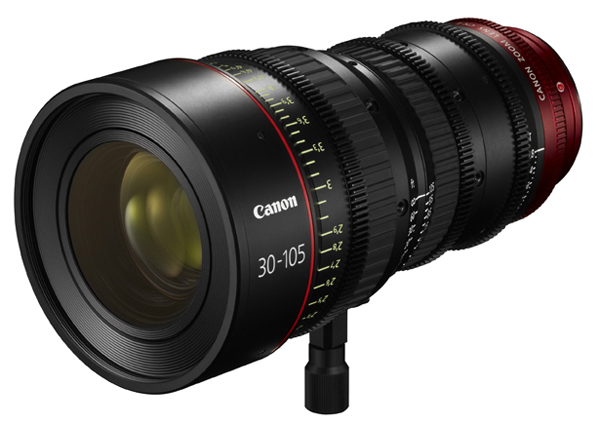
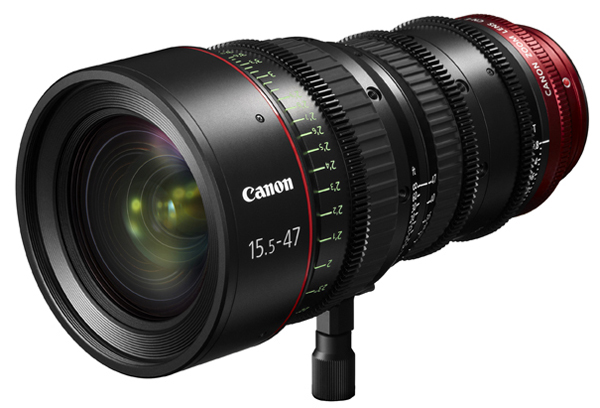
These are by no means budget lenses, with the price set to be around the $24,000 US mark. Of course that puts them way beyond the reach of most shooters. If you do have deep enough pockets they will, however, last you many years and provide you with top class optics, cine housings and proper iris and focus control.
The first of Canon’s cine prime lenses – the CN-E 24mm T1.5L F – is now shipping at a price of $5,220US. I have yet to see a proper review of this particular series of lenses (a 50mm T1.3 and 85mm T1.3 are to follow) so I don’t know how well they perform. For EOS users they do, however, offer competition to the very popular Zeiss CP.2 series.
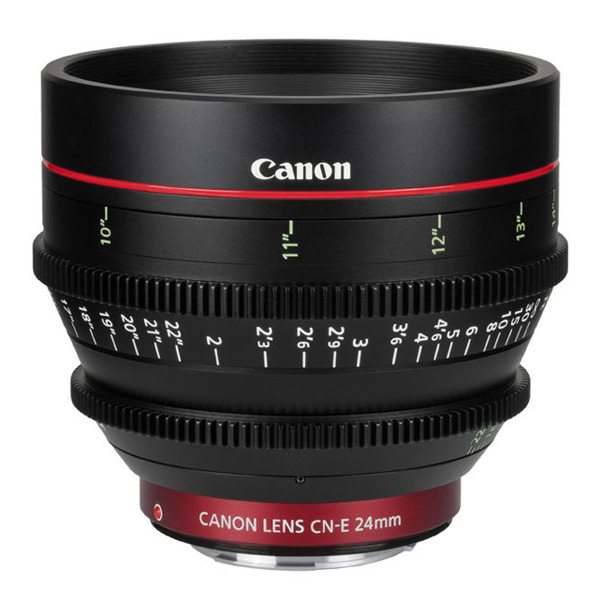
Speaking of Zeiss, they too have announced some new lenses. The CZ.2 28-80/T2.9 Compact Zoom will be on show at the IBC in Amsterdam. This is a full frame lens that is capable of capturing 4K resolution. This is the second Compact Zoom CZ.2 lens from Carl Zeiss, complementing the Compact Zoom CZ.2 70-200/T2.9 which was released at NAB earlier in the year.
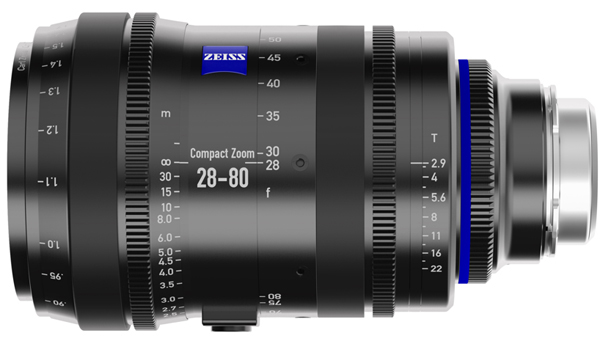
This announcement is probably why a few weeks ago the Zeiss LWZ.2 Lightweight 15.5-45mm T2.6 Zoom had a price drop to $19,995US. It was previously up around the $27K mark from memory. Now there are three Zeiss zooms at around the same price point. Whilst these are also probably too pricey for most to buy it is likely that these lenses will be finding their way to a rental house near you in the near future.
There are also new 135mm and 25mm CP.2 lenses on the way too. As with the rest of the CP.2 range these can work on various different lens mounts with PL, Canon EF, Nikon F, Micro Four Thirds and Sony E options all available. The CP.2 lenses also feature a more rounded aperture with more blades than their photographic lens cousins.
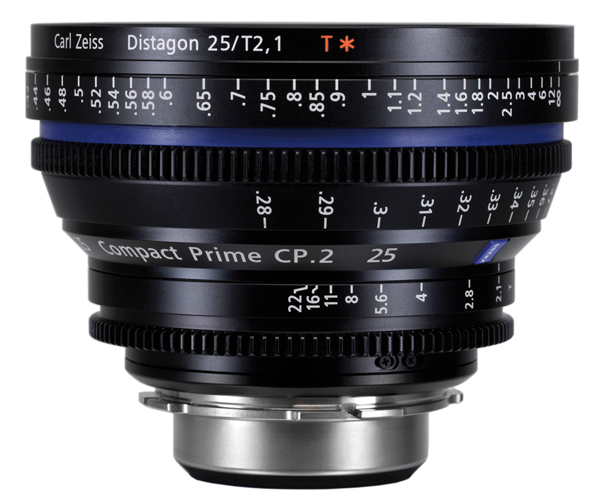
More details from Zeiss:
With a length of 196mm and weighing in at 2.5 kg (5.5lbs), the Compact Zoom CZ.2 28-80/T2.9 is sleek and lean. Thanks to the five different mounts (PL, EF, F, MFT and E), this new zoom lens from Carl Zeiss can be easily adapted to numerous camera systems both now and in the future, as well as on HDSLR cameras, HD video cameras and professional cine cameras.
“Thanks to the interchangeable mount and the 36 x 24mm image-circle illumination, the new Compact Zoom CZ.2 28-80/T2.9 is highly versatile and a future proof investment,” says Michael Schiehlen, Director of Sales of the Camera Lens Division of Carl Zeiss AG. “With focal lengths from 28 to 80mm and outstanding image performance, it offers professionals as well as ambitious cinematographers a lot of room to explore their creativity in many types of shooting situations. The Compact Zoom CZ.2 70-200/T2.9 has already proven that there is no comparable zoom family on the market with full frame coverage and interchangeable mount.”
The Compact Zoom CZ.2 28-80/T2.9 will be delivered in the second quarter of 2013. The recommended retail price is €14,900 or US$19,900 (excluding VAT)*.
Here are details from Canon:
Main Features: CN-E15.5–47mm T2.8 L S/SP and CN-E30–105mm T2.8 L S/SP
1. High optical performance for use with 4K-resolution cameras
Supports 4K (4096 x 2160 pixels) production standards, with a level of resolution exceeding four times the resolution of Full HD.
Offers compatibility with industry-standard Super 35 mm-equivalent image format as well as APS-C-size sensors.
The optimal placement of low-refraction, low-dispersion UD (ultra-low dispersion) glass corrects for axial and lateral chromatic aberrations to realize exceptional imaging performance without color blurring.
With a T-number of 2.8, the new lens lineup offers bright performance and, with no changes in brightness during zooming, enables the use of attractive blur effects when employing a shallow depth of field.
Each lens is equipped with an 11-blade aperture diaphragm for soft, attractive blur characteristics.
The lenses minimize focus-induced changes in the angle of view and, through the latest advances in anti-reflective coating and related technologies, reduce the occurrence of ghosting and flare.
2. Broad focal-length coverage despite compact, lightweight design
Designed with hand-held shooting in mind, each lens weighs just approximately 2.2 kg, less than half the weight of the top-end zoom lens models that went on sale earlier this year.
Combining the wide-angle and telephoto zoom lenses as a set enables users to cover a wide focal length range, from 15.5 mm (wide-angle end) to 105 mm (telephoto end).
Because the lenses provide a long focal length at the telephoto end, they enable the magnification of scenes shot from a distance and the use of attractive blur effects when employing a shallow depth of field.
3. Designed to deliver high operability
With a focus rotation angle of approximately 300 degrees, the lenses facilitate precise focusing performance.
Zoom, focus and iris markings all appear on angled surfaces for improved readability from behind the camera.
Features a unified front lens diameter and uniform gear positions, doing away with the need to adjust or reposition accessory gear when switching between the two lenses.
By removing the cover ring, users can easily perform flange-back adjustment.
4. Functionality to realize increased shooting convenience
The new lenses can be used with matte boxes and other standard manual and electronic movie industry accessories widely used in the motion picture production.
Each lens offers a reduced minimum object distance (0.5 m for the CN-E15.5-47mm T2.8 L S/SP and 0.6 m for the CN-E30-105mm T2.8 L S/SP) that makes possible tighter close-ups and facilitates shooting in limited-space environments.
The EF-mount version lenses, when combined with Cinema EOS System cameras, support lens-camera communication enabling the recording of zoom and other settings along with video data, making possible the effective management of shooting conditions. Additionally, a future camera firmware update (release date to be decided) will enable automatic image correction along with other benefits.
About Matthew Allard, Aljazeera Senior Field Cameraman, Kuala Lumpur:
Matt has been a Camera/Editor in TV news for more 20 years, previously working for both Channel 9 and Channel 10 in Australia. Twice Network Ten Australia’s cameraman of the year as well as being a Walkley Finalist for outstanding camerawork in 2006 (for coverage of the Cronulla Race Riots) and a Logie Finalist for outstanding news coverage 2006 (Bali 9). He is a multiple ACS (Australian Cinematographers Society) award winner. His Sword Maker story that was shot on a 7D won the prestigious Neil Davis International News Golden Tripod at the 2011 ACS Awards. He has covered news events in more than 35 countries, from major sporting events to terrorist bombings. Based out of the Kuala Lumpur broadcast centre in Malaysia he is an avid user and follower of new technology, shooting stories on HD broadcast cameras, the Sony F3 as well as new Canon DSLRs.





